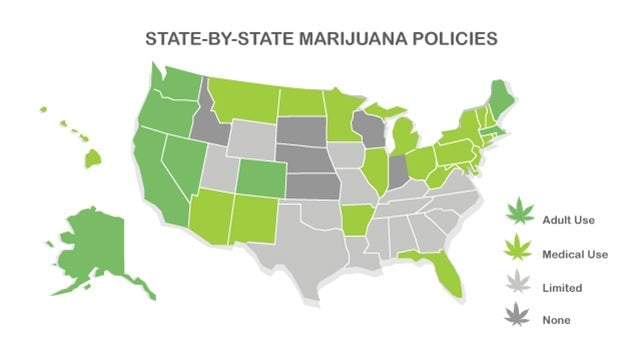Safe, not sorry: Medical marijuana and workplace risk
The workplace has changed a lot in the past few decades. “Casual Friday” has become “Casual Everyday.” People are leaving behind their standard chair for a standing desk. The predictability of a 9-to-5 schedule feels like a distant memory to the always-connected worker. And as work culture has shifted, so have options for workers facing medical conditions. One of the biggest changes is the legalization and rise of medical marijuana (MMJ), shifting the focus for employers from “what if?” to “what now?” when considering how to handle MMJ in the workplace.


The workplace has changed a lot in the past few decades. “Casual Friday” has become “Casual Everyday.” People are leaving behind their standard chair for a standing desk. The predictability of a 9-to-5 schedule feels like a distant memory to the always-connected worker. And as work culture has shifted, so have options for workers facing medical conditions. One of the biggest changes is the legalization and rise of medical marijuana (MMJ), shifting the focus for employers from “what if?” to “what now?” when considering how to handle MMJ in the workplace.
For employers large and small, medical marijuana brings unprecedented safety, legal, and company culture challenges. Laws vary state to state and with no current path toward federal legalization, there’s no playbook on the “right” way to monitor and regulate employee MMJ use. Experts agree a clear company policy reduces risk, protects customers and employees, and eliminates confusion for both employees and administration.
Riding the lines of legality
With a marked rise in the legalization of recreational and medical marijuana at the state level, these are heady times for cannabis connoisseurs. Though marijuana is still illegal under federal law, support of legalization is growing fast. Pew recently found that more than 57% of adults support legalization—up from 16% in 1990. The rapid increase in prescribing MMJ to treat common conditions like chronic pain, nausea, and muscle spasms has driven the shift, in parallel with strong support from millennials towards legalization.
Currently, 29 states and Washington, DC have passed legislation authorizing the use of medical marijuana, and eight (plus DC) have legalized recreational use. And the trend isn’t slowing—several states have pending initiatives to expand their state medical marijuana legislation.

But acceptance of medical marijuana doesn’t mean its potential impact on worker safety is going away. “Cannabis is a drug that can affect functioning in the workplace,” says Lori Adams, RN, Certified Occupational Health Nurse Specialist, Director at Liberty Mutual. “Like other drugs, it may affect one’s ability to operate equipment and heavy machinery. It’s up to the employer to maintain a safe, healthy workplace for the worker and other employees.” Promoting a safe work environment means complying with federal laws and regulations like those from Occupational Safety and Health Administration (OSHA).
The best form of offense is good defense
A risky incident—or worse—shouldn’t be the trigger for employers to create a MMJ policy. For companies in states with legal use the moment to act is now. Adams recommends that all employers adopt guidelines about the use of, and consequences for, substances in the workplace. “The key is making sure that the policy is communicated in a consistent and effective manner so all employees understand their obligations when they come to work.”
Varying (and often conflicting) state and federal laws, plus the cost, complexity, and impacts on company culture from drug testing, can make developing an effective, sound drug policy a challenge. Regular legal counsel is strongly recommended to help develop policies, advise on appropriate (if any) drug testing practices, ensure compliance, and reconcile state and federal laws. Referring to the websites of the US Department of Labor, the Substance Abuse and Mental Health Services Administration, the Centers for Disease Control and Prevention, the Department of Transportation, and the National Safety Council can also help support and answer standard policy questions.
Turning policy into practice
Once a policy is established, employees need to know about it, and employers need to consistently enforce it. “Employers need to educate managers about how to handle an employee presenting them with a medical marijuana card,” says Adams. This may raise issues and complications under HIPAA, which safeguards medical privacy, and the Americans with Disabilities Act. “It is critical for managers to get human resources involved to guide the process and gain a better understanding of specific employee circumstances.”
The bottom line: “Employers need to create or update standard guidelines that detail their policy on the use of substances—and make sure that employees understand what the policy means,” says Liberty Mutual Insurance’s Adams. With a sound policy and informed employees, businesses can ensure workplace safety and mitigate risk.
This article was produced on behalf of Liberty Mutual by Quartz Creative and not by the Quartz editorial staff.